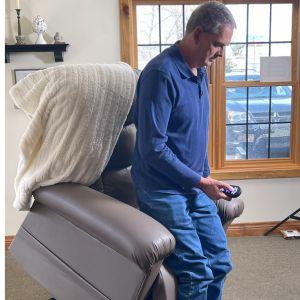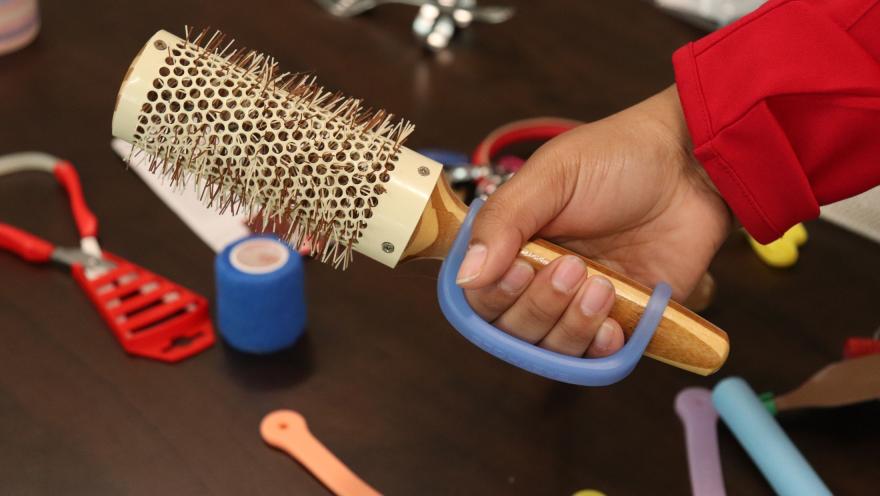In broad terms, occupational therapy focuses on a person’s ability to perform activities of daily living—to live life to its fullest. For people with ALS, an occupational therapist (or OT) is there to help them maintain their independence for as long as possible as well as to find ways to maintain their quality of life. April is Occupational Therapy Month, so what better time to explore the many, and varied, ways an OT can make a difference.
Occupational therapists are key members of the mobility team for a person living with ALS. As the disease progresses, most people gradually lose their ability to use their hands and their arms as their muscles weaken. OTs work to provide expertise and creativity to help their patients better manage activities including self-care and daily living, work, leisure tasks, and community engagement.

As the OT is focused on the activities that make up our daily lives, it makes sense that one place they can make an impact is in the home, where we typically spend so much of our time. During the early stages of disease, the OT can provide strategies for tasks as mundane as opening jars, pulling zippers, or buttoning buttons. Or maybe a person finds doing the dishes calming but standing is difficult for them, so a modified chair for support is needed. In all cases, the OT will consider what is important for the person they are working with and tailor a plan to allow them to continue with those activities.
An OT can also assist with making a home more livable as ALS progresses. That can be as simple as installing grab bars around the home for easier movement or offering advice on bathroom or kitchen modifications to allow for wheelchair access. The OT often works with the Association’s local care teams to find equipment that can be loaned at no cost to help with the changing needs ALS presents.
“I will often brainstorm with colleagues to find the best piece of equipment for a person. I have gone into homes to install some equipment and to educate the caregiver on how to use equipment safely,” Melissa says. “Sometimes a piece of equipment does not work, and we have to problem solve on what the best solution is for a person.”

The focus on problem solving also means working closely with other members of the multidisciplinary care team. For example, the OT will typically work closely with the speech language pathologist and the physical therapist on communication strategies, including voice-activated tools and eye-gaze technology. These tools are also important for maintaining connections, not just to immediate family, but the outside world as well.
Every person living with ALS progresses differently, and because of that, each person’s needs are unique. But whatever those needs are, the occupational therapist is there with advice, equipment, and support to help their patients maintain the highest quality of life while facing the challenges ALS brings.
You can learn more about ALS multidisciplinary centers and clinics and find one near you HERE. You can find more local support resources HERE.
To continue to follow stories about people living with ALS in the community and learn more about the disease, subscribe to receive our weekly blogs in your inbox HERE or follow us at als.org/blog. If you or someone you know would like to share a story with the ALS community, share with us HERE.


Join the conversation. Please comment below.